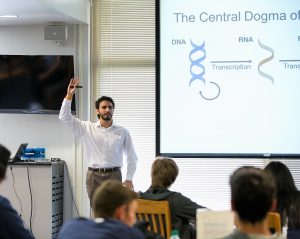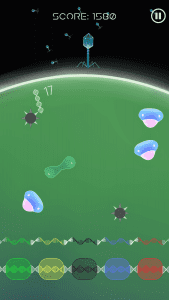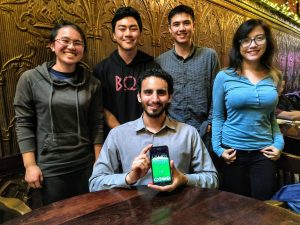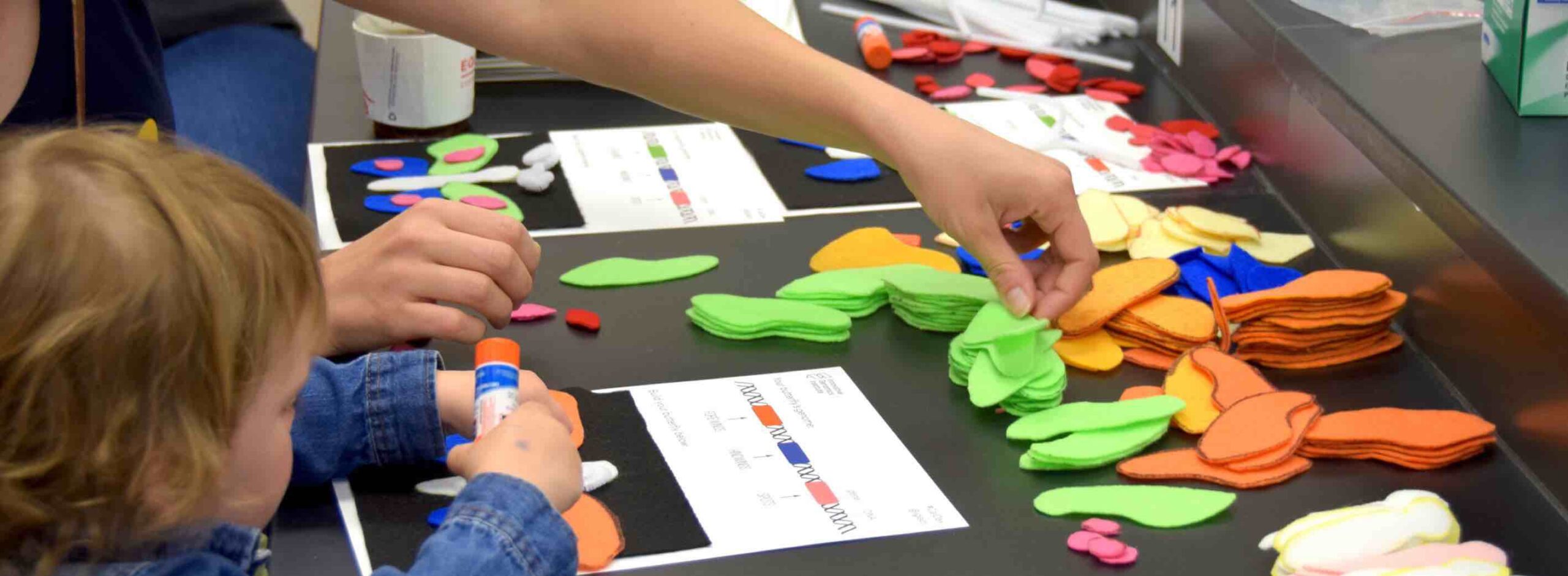
Teaching CRISPR Through Gaming
CRISPR is a remarkable genome editing technology that will affect the lives of future generations in ways that scientists are just now imagining. It will play a role in the future of health care, food, and the environment. The youth of today are the decision-makers of tomorrow; so when I realized that there was an educational gap around CRISPR and its potential, I decided to step up the science communication. Incredible supports in this effort were the Innovative Genomics Institute (IGI) and the Communication, Literacy & Education for Agricultural Research (CLEAR) Project, which encourages young scientists to develop effective strategies for sharing science with a broad public audience.

I worked with CLEAR members to develop an hour-long interactive lesson about the mechanics of CRISPR, its potential uses, and ethical considerations. In a single school year, we taught this lesson to over 700 students across 10 schools in the Bay Area and Pasadena, CA. I really enjoyed listening as students shared their thoughts and feelings about the future of CRISPR. When I asked if we should revive the Woolly Mammoth, a high school freshman suggested that the California Grizzly Bear would be a better idea because its native habitat is more intact. When I asked about making cosmetic changes to future generations with CRISPR, a conscientious student brought up concerns that such changes would deepen a culture of haves and have-nots. Then, the class would end. Is the lesson and discussion over? Will the students share those thoughts and feelings with family and friends? What can I do to keep their minds on CRISPR?
A fun idea emerged from a pastime with my youngest brother Dylan, who lives almost 400 miles away. To stay in touch, we play video games online, usually alien invasion shooter games. We join a party of other players, talk about the lore of the games, try to beat each other’s scores, and keep coming back for more… Aha! That’s how I can keep the CRISPR discussion going. The success of recent games like Pokémon GO shows that people of all ages have an appetite for engaging mobile games. I saw parallels between the original function of CRISPR as a bacterial defense system and shooter game elements. The DNA-cutting Cas9 enzyme would be my weapon; the guide RNAs (gRNAs) would be my ammunition; and, viruses, the evil aliens. Imagining this CRISPR-based game in the hands of my youngest brother and his friends motivated me to make it happen.
Growing up through the rise of video games from Space Invaders to Angry Birds gave me ideas of how to make CRISPR fun. However, developing a new game required more study than just enjoying previous ones. Online resources, such as “The 3 Primary Principles of Game Design,” provided guidance:
- Build around a core game mechanic
- Easy to learn but fun to master
- Reward the player

- Adaptation – acquisition of virus DNA
- Expression – synthesis of CRISPR components
- Interference – degradation of virus DNA by CRISPR
Increasing the frequency of attacking viruses would challenge the player’s mastery and keep them engaged. As for rewarding the player, high scores on the leaderboard would give the players bragging rights. If your top score is beat, get back in there and get a higher score!
With a plan in place, I reached out to a student-run course at UC Berkeley on game design and development. I cannot give enough credit to the incredible software developers and artists who helped make this game real: Sabrina Wong, Christopher Yun, Samantha Elms, Nathan Pannell, Lulu Wang, and Wesley Pickering. Every one of them made valuable contributions to the development and release of the game. Together we explored gameplay ideas, developed novel artwork, and sought to balance actual science with appealing gameplay. We incorporated published studies into our game in a number of ways:
- Acquired virus DNA is preferentially incorporated into one end (the leader end) of the CRISPR array [2]
- Individual gRNAs are derived from a long precursor RNA strand [3]
- Anti-CRISPR protein AcrIIA4 binds only to assembled Cas9-gRNA complexes and not to Cas9 alone [4]

As we knew much of the gameplay would be color-based and wanted to open up the game to as many students as possible, we reached out to colorblind friends and colleagues for guidance in selecting distinguishable colors. Thanks also go to the members of CLEAR and IGI for their stellar support and feedback. The final game is beyond what I originally imagined, and it could not have been done without the incredible development team.
CRISPR Defense emerged from an exciting high school outreach program (CLEAR in the Classroom), the bond with my youngest brother, and the hard work and creativity of Cal’s undergraduates. When you zoom-in at the beginning of the game, I hope you realize that this war between bacteria and viruses is going on all around us. And, when you zoom-out to the world around you, I hope you think about CRISPR and what role it will have in our future.
CRISPR Defense is FREE on the Google Play and Apple App stores. Happy gaming!
References:
- Rath D, Amlinger L, Rath A, Lundgren M. The CRISPR-Cas immune system: Biology, mechanisms and applications. Biochimie. 2015;117:119-128. doi:10.1016/j.biochi.2015.03.025.
- Barrangou R, Fremaux C, Deveau H, et al. CRISPR provides acquired resistance against viruses in prokaryotes. Science. 2007;315(5819):1709-1712. doi:10.1126/science.1138140.
- Brouns SJJ, Jore MM, Lundgren M, et al. Small CRISPR RNAs guide antiviral defense in prokaryotes. Science. 2008;321(5891):960-964. doi:10.1126/science.1159689.
- Shin J, Jiang F, Liu J-J, et al. Disabling Cas9 by an anti-CRISPR DNA mimic. Sci Adv. 2017;3(7):e1701620. doi:10.1126/sciadv.1701620.
You may also be interested in

CRISPR, Crafts, and Computers: IGI at Cal Day 2019

IGI Launches Three-Week Undergraduate CRISPR Lab Course

Cal Day 2018 Gets a Bit CRISPR

 By
Michael Gomez
By
Michael Gomez